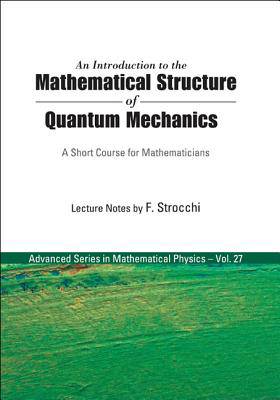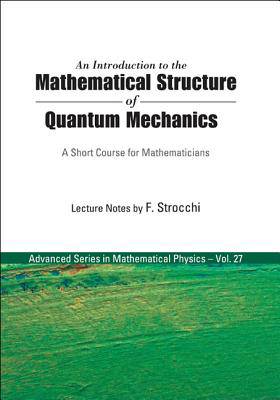
- Retrait gratuit dans votre magasin Club
- 7.000.000 titres dans notre catalogue
- Payer en toute sécurité
- Toujours un magasin près de chez vous
- Retrait gratuit dans votre magasin Club
- 7.000.000 titres dans notre catalogue
- Payer en toute sécurité
- Toujours un magasin près de chez vous
Introduction to the Mathematical Structure of Quantum Mechanics, An: A Short Course for Mathematicians
Franco Strocchi
88,95 €
+ 177 points
Description
This book arises out of the need for Quantum Mechanics (QM) to be part of the common education of mathematics students. Rather than starting from the Dirac-Von Neumann axioms, the book offers a short presentation of the mathematical structure of QM using the C--algebraic structure of the observable based on the operational definition of measurements and the duality between states and observables. The description of states and observables as Hilbert space vectors and operators is then derived from the GNS and Gelfand-Naimark Theorems.For finite degrees of freedom, the Weyl algebra codifies the experimental limitations on the measurements of position and momentum (Heisenberg uncertainty relations) and Schroedinger QM follows from the von Neumann uniqueness theorem.The existence problem of the dynamics is related to the self-adjointness of the differential operator describing the Hamiltonian and solved by the Rellich-Kato theorems. Examples are discussed which include the explanation of the discreteness of the atomic spectra.Because of the increasing interest in the relation between QM and stochastic processes, a final chapter is devoted to the functional integral approach (Feynman-Kac formula), the formulation in terms of ground state correlations (Wightman functions) and their analytic continuation to imaginary time (Euclidean QM). The quantum particle on a circle as an example of the interplay between topology and functional integral is also discussed in detail.
Spécifications
Parties prenantes
- Auteur(s) :
- Editeur:
Contenu
- Nombre de pages :
- 160
- Langue:
- Anglais
- Collection :
- Tome:
- n° 27
Caractéristiques
- EAN:
- 9789812564313
- Date de parution :
- 21-11-05
- Format:
- Livre relié
- Format numérique:
- Genaaid
- Dimensions :
- 87 mm x 233 mm
- Poids :
- 403 g







